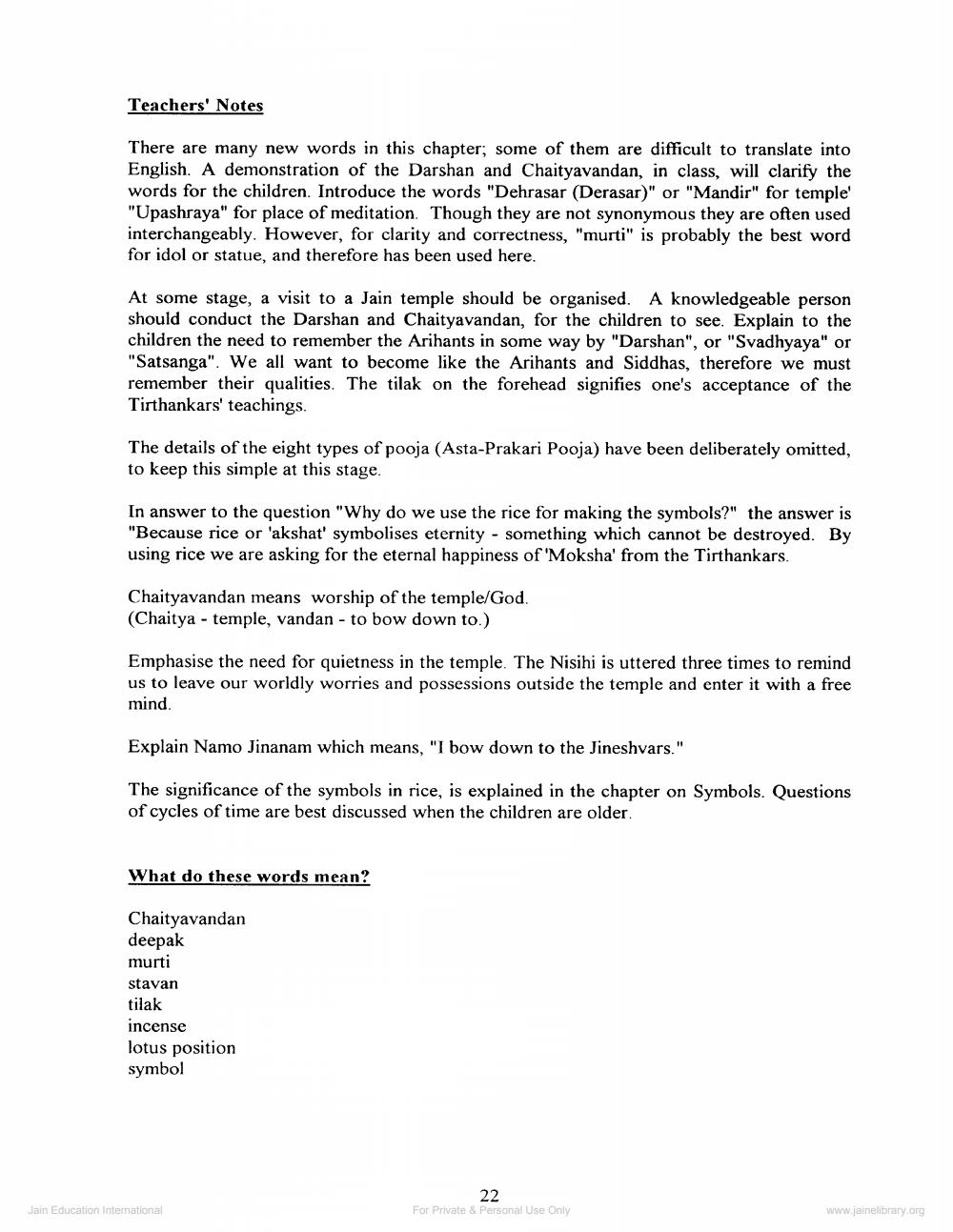________________
Teachers' Notes
There are many new words in this chapter; some of them are difficult to translate into English. A demonstration of the Darshan and Chaityavandan, in class, will clarify the words for the children. Introduce the words "Dehrasar (Derasar)" or "Mandir" for temple' "Upashraya" for place of meditation. Though they are not synonymous they are often used interchangeably. However, for clarity and correctness, "murti" is probably the best word for idol or statue, and therefore has been used here.
At some stage, a visit to a Jain temple should be organised. A knowledgeable person should conduct the Darshan and Chaityavandan, for the children to see. Explain to the children the need to remember the Arihants in some way by "Darshan", or "Svadhyaya" or "Satsanga". We all want to become like the Arihants and Siddhas, therefore we must remember their qualities. The tilak on the forehead signifies one's acceptance of the Tirthankars' teachings.
The details of the eight types of pooja (Asta-Prakari Pooja) have been deliberately omitted, to keep this simple at this stage.
In answer to the question "Why do we use the rice for making the symbols?" the answer is "Because rice or 'akshat' symbolises eternity - something which cannot be destroyed. By using rice we are asking for the eternal happiness of 'Moksha' from the Tirthankars.
Chaityavandan means worship of the temple/God. (Chaitya temple, vandan - to bow down to.)
Emphasise the need for quietness in the temple. The Nisihi is uttered three times to remind us to leave our worldly worries and possessions outside the temple and enter it with a free mind.
Explain Namo Jinanam which means, "I bow down to the Jineshvars."
The significance of the symbols in rice, is explained in the chapter on Symbols. Questions of cycles of time are best discussed when the children are older.
What do these words mean?
Chaityavandan
deepak
murti
stavan
tilak
incense
lotus position symbol
Jain Education International
22
For Private & Personal Use Only
www.jainelibrary.org




